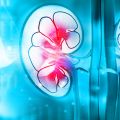8 Reasons for Vaginal Cramps That Aren’t Related to Pregnancy

Cramps come in a variety of types and intensities, ranging from mild aches to excruciating pain. The pain can also strike in different areas, such as your abdomen, pelvis, or vagina.
If you experience pain or discomfort in your vagina, it could be due to an infection or another problem with one or more of your reproductive organs. Your vagina, vulva, cervix, ovaries, fallopian tubes, and uterus are all included.
Pain in this area can also be caused by pregnancy complications. Because some causes of vaginal cramps can be serious, you should always consult your doctor about this symptom. Continue reading to learn about the symptoms to look out for and the conditions that your doctor may diagnose.
1. Dysmenorrhea
Dysmenorrhea is pain that occurs during a woman's menstrual cycle. During their reproductive years, between 16 and 91 percent of women experience cramping or pain. The pain is severe in up to 29% of these women.
Primary dysmenorrhea pain usually begins one or two days before your period or when you start to bleed. It will be felt in your lower abdomen.
Secondary dysmenorrhea pain begins earlier in your menstrual cycle and lasts longer than primary dysmenorrhea period cramps.
2. Vaginitis
Vaginitis is a vaginal inflammation caused by bacteria, yeast, or parasites. Yeast infections and bacterial vaginosis are both extremely common. In the United States, nearly 30% of women aged 14 to 49 have bacterial vaginosis. Approximately 75% of women will develop at least one yeast infection during their lifetime.
3. Vaginismus
Vaginismus is a condition in which your vaginal muscles tighten involuntarily when something enters your vagina. It can occur during sex, pelvic examinations, or when inserting a tampon. The tightening of the muscles causes severe pain. This is a relatively uncommon condition. Vaginismus affects between 0.4 and 6% of women.
You have no control over the muscle tightness. It's thought to be related to anxiety or fear, such as if you've had an unpleasant or painful sex experience in the past.
4. Vulvodynia
Vulvodynia is a pain in the vulva — the external female genital area containing the opening to the vagina — that is chronic and lasts at least three months. Although there is no obvious cause, it could be caused by nerve damage around the vulva, infections, or sensitive skin.
5. Cervicitis
The cervix is the narrowed and lowest part of the uterus that houses the uterus's opening into the vagina. Cervicitis is a cervix inflammation. Bacterial infections or allergic reactions can cause it, but it is most commonly caused by a STI such as gonorrhea or chlamydia.
Cervicitis is frequently asymptomatic. It could be discovered during a Pap smear or another test on your cervix and other pelvic organs.
6. Pelvic floor dysfunction
The pelvic floor muscles support the pelvic organs, which include the bladder, uterus, and rectum. A pelvic floor dysfunction is a group of disorders that affect these muscles and make it difficult to urinate or have a bowel movement. This condition can be caused by injuries, childbirth, or other damage to the muscles of your pelvic floor.
7. Endometriosis
Endometriosis occurs when the endometrial tissue that lines the surface of your uterus grows outside of the uterine cavity on other parts of your pelvis, such as the ovaries, fallopian tubes, or on top of the outside surface of the uterus.
The uterine lining swells and sheds each month during your period. When this tissue is in other parts of your uterus, it cannot escape like a normal endometrial lining. Wherever the swollen tissue grows, it causes pain.
8. Adenomyosis
Adenomyosis occurs when endometrial tissue, which normally lines the uterus, develops and grows into the muscular wall of the uterus.
This tissue swells up every month during your period, just like it would in the uterus. Because the tissue has nowhere to go, it expands the uterus and causes severe cramping pain during periods.
It's unclear how many women have this condition. According to some studies, adenomyosis affects anywhere from 20% to 36% of women who have a hysterectomy for noncancerous reasons.
Other articles and publications:
Articles and publications of other companies:
- +1 (646) 270-9836
- Long Island City
- grantny.com













